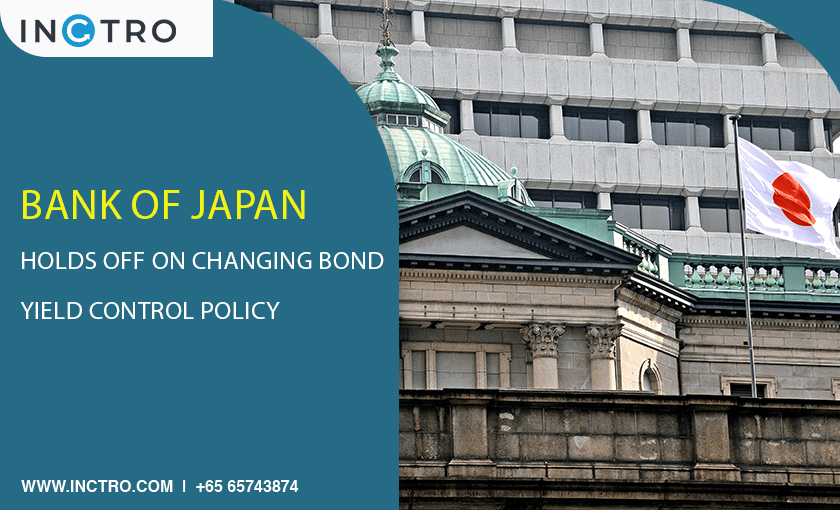- March 10, 2023
- Posted by: Vivek Sharma
- Category: Knowledge Base

On Friday, the Bank of Japan (BOJ) held its last policy meeting with retiring central bank governor Haruhiko Kuroda. It decided to maintain ultra-low interest rates and hold off on changing its controversial bond yield control policy. Most analysts widely expected the decision, but it made the Yen and local bond yields tumble as some investors unwound their bets.
BOJ Governor Mr Kuroda used his post-meeting news conference to offer insights into the bank’s approach to inflation, wages, and market distortion.
BOJ Maintains Ultra-Low Interest Rates and a Bond Yield Control Policy
The BOJ has maintained its ultra-low interest rates and bond yield control policy as it navigates through a leadership transition in April. The bank’s bond yield control policy has been controversial, with some analysts calling for the bank to adjust its yield curve control (YCC) at its last policy meeting. However, the bank has left its options open and held off on making any changes.
Governor Discusses Wages and Inflation
Governor Kuroda spoke about the possibility of a positive change in Japan’s long-held perception that wages and inflation won’t rise. He mentioned that changes in the views of companies and unions before the shunto wage negotiations could lead to a positive change. Mr Kuroda also hoped that Japan could stably and sustainably achieve the BOJ’s 2% inflation target.
Side Effects of Monetary Easing and Exiting Loose Policy
Governor Kuroda addressed the side effects of the bank’s monetary easing policies, stating that the BOJ has been taking various steps to mitigate these side effects. He also mentioned that the benefits of the bank’s monetary easing policies have far exceeded the demerits.
Mr Kuroda noted that debating an exit from the bank’s ultra-loose policy is premature. He added that how to combine changes in interest rates and the central bank’s balance sheet, and in what order, would depend on economic and price developments. Mr Kuroda expects inflation to slow below the bank’s target towards the latter half of fiscal 2023 before picking up again. As such, it’s too early to decide whether the BOJ can exit its easy policy at this stage.
Wage Negotiations and Market Distortion
Mr Kuroda discussed the importance of wage negotiations in achieving a positive wage-inflation cycle. He noted that the outcome of wage negotiations, including how much base pay will rise, is critical for Japan. Governor Kuroda also mentioned that the bank is looking at the mechanism at which the economy and prices move, rather than a single piece of data, in determining the outlook.
Mr Kuroda addressed market distortion, noting that the shape of the yield curve has become relatively smooth since the January meeting. However, he mentioned that the distortion has not been fixed completely and that there is still some deterioration in market functions. Mr Kuroda expects the market function to gradually improve by conducting flexible market operations and using various tools.
Monetary Policy Over the Past Decade
The Bank of Japan (BOJ) Governor, Haruhiko Kuroda, has consistently conducted quantitative and qualitative monetary easing (QQE) over the past decade. While the technical aspects of QQE have changed, such as increasing asset buying or diversifying the type of tools, the central bank’s goal of achieving massive monetary easing has remained the same. However, in the last three years, the BOJ has deployed massive liquidity through market operations to deal with the COVID-19 pandemic, which was a huge success and came on top of QQE. Mr Kuroda has also acknowledged the side effects of monetary easing but believes that the benefits have far exceeded the demerits. He has emphasised the importance of maintaining massive stimulus to support corporate efforts to raise wages and to achieve the BOJ’s 2% inflation target.
Conclusion
In conclusion, the Bank of Japan (BOJ) has maintained its ultra-low interest rates and left its controversial bond yield control policy unchanged ahead of a leadership transition in April. Despite market expectations that retiring central bank governor Haruhiko Kuroda would tweak the yield curve control (YCC) at his last policy meeting, the decision made the Yen and local bond yields tumble. Mr Kuroda’s post-meeting comments highlighted the importance of achieving a positive wage-inflation cycle and maintaining massive stimulus to support corporate efforts to raise wages. He also acknowledged the side effects of monetary easing but believes that the benefits have far exceeded the demerits. The BOJ’s consistent conduct of quantitative and qualitative monetary easing (QQE) over the past decade has not changed. Still, the central bank has deployed massive liquidity through market operations to deal with the COVID-19 pandemic. The BOJ’s exit from ultra-loose policy remains uncertain and dependent on economic and price developments at the time.
